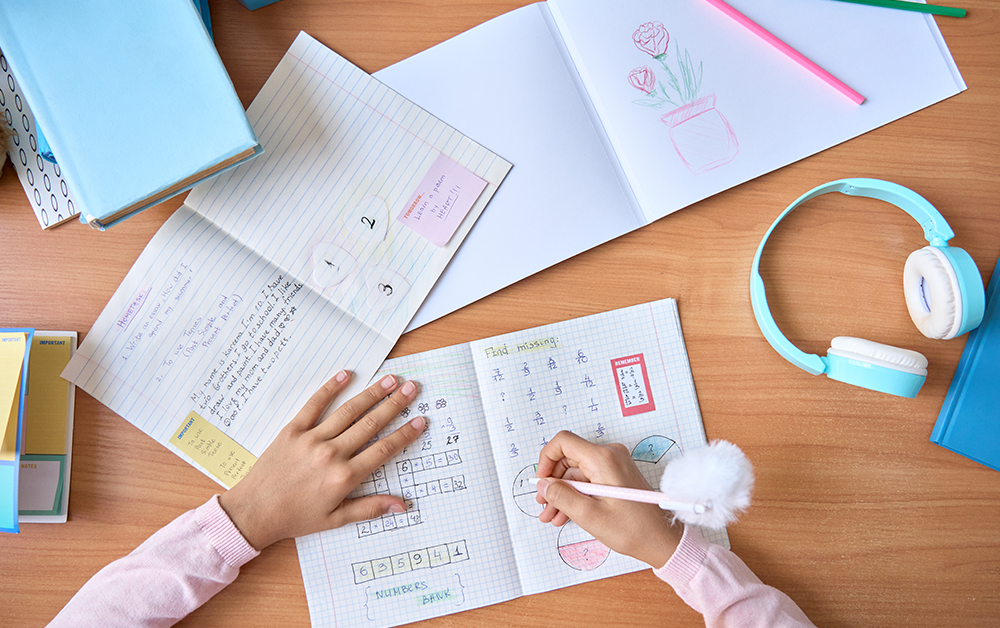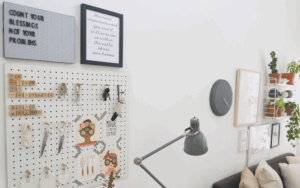
How to Create a Productive Homework Space in Your Home
Creating a productive homework space at home is essential for helping students stay focused, organized and motivated. Whether your child is in elementary school or college, a well-designed workspace can make all the difference in their academic success.
In this blog post, we share practical tips about how to set up a homework area that promotes productivity and minimizes distractions.
1. Choose a Quiet, Well-Lit Area
The first step in creating a productive homework space is selecting the right location. Look for a quiet spot in your home where your child can concentrate without interruptions. Natural light is ideal, so, if possible, choose a space near a window. Good lighting is crucial to reduce eye strain, so ensure there’s adequate artificial light if natural light isn’t available.
2. Keep Your Supplies Organized and Workspace Clutter-Free
An organized workspace can significantly boost productivity. All necessary supplies—such as pencils, paper, textbooks, and a calculator—should ideally be within easy reach. Use containers, drawers or shelves to keep everything in its place. A clutter-free environment helps your child focus on their work, as it eliminates the distractions that clutter can bring.
3. Personalize the Space with Motivational Decor
Personalizing a homework space can make it more inviting and encouraging. Add motivational quotes, posters or artwork that inspire your child. Choose colors and decorations that they love, making the area feel like their own special spot for learning. This personalized touch can help them feel more connected to the space and, in turn, more inclined to use it.
4. Utilize Noise-Canceling Headphones to Minimize Distracting Noise
In a busy household, noise can be a significant distraction. Noise-canceling headphones are a great investment to help your child stay focused on their homework. These headphones can block out background noise, allowing your child to concentrate better, especially if there are other activities happening nearby.
5. Incorporate a Whiteboard and Calendar for Planning and Tracking Assignments
A whiteboard is a versatile tool for planning out tasks and brainstorming ideas. Your child can use it to jot down key points, make to-do lists or work through problems visually. Having a calendar in the workspace will also help with tracking assignments, due dates and other important events. This visual reminder can keep them on top of their responsibilities and reduce the stress of forgotten deadlines.
6. Invest in a Comfortable Chair and Desk
Comfort is key to maintaining focus during long study sessions. Invest in a chair that offers proper back support and is adjustable to the right height for your child. Pair it with a desk that provides enough space for spreading out materials and working comfortably. A good ergonomic setup can prevent discomfort and encourage longer, more productive study periods.
7. Establish a Routine and Set Clear Boundaries
Setting a regular study routine helps establish a sense of discipline and structure. Designate specific times for homework and study sessions each day. Set clear boundaries around the homework space, ensuring it’s used solely for academic activities. This separation helps your child mentally prepare for focused work when they enter the space.
8. Use Technology Wisely
While technology can be a distraction, it can also be a powerful tool for learning when used wisely. Equip the homework space with a computer or tablet if needed, but make sure it’s used strictly for educational purposes during study time. Consider using apps or software that can aid in organization, such as digital planners or timers that help manage study sessions.
9. Keep the Space Well-Ventilated
Fresh air is essential for maintaining concentration and mental clarity. Make sure the homework space is well-ventilated, whether it’s through an open window or a fan. Good air circulation can help prevent feelings of stuffiness and fatigue, keeping your child more alert and focused.
10. Encourage Regular Breaks
Finally, it’s important to encourage your child to take regular breaks during study sessions. A short break every hour can help refresh their mind and prevent burnout. Encourage activities that allow them to move around, such as stretching or taking a quick walk. These breaks can help maintain productivity over longer periods.
Conclusion
By carefully designing a homework space with these tips in mind, you can create an environment that fosters focus, organization, and motivation. A well-thought-out homework area not only helps improve academic performance but also encourages positive study habits that can last a lifetime. Start with these simple steps to set up a space where your child can thrive academically.



